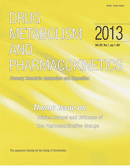Volume 28, Issue 6
Displaying 1-12 of 12 articles from this issue
- |<
- <
- 1
- >
- >|
Editorial
-
2013Volume 28Issue 6 Pages 451-452
Published: 2013
Released on J-STAGE: December 25, 2013
Download PDF (57K)
Regular Articles
-
2013Volume 28Issue 6 Pages 453-461
Published: 2013
Released on J-STAGE: December 25, 2013
Advance online publication: April 23, 2013Download PDF (2605K) -
2013Volume 28Issue 6 Pages 462-467
Published: 2013
Released on J-STAGE: December 25, 2013
Advance online publication: April 30, 2013Download PDF (1064K) -
2013Volume 28Issue 6 Pages 468-474
Published: 2013
Released on J-STAGE: December 25, 2013
Advance online publication: May 07, 2013Download PDF (2318K) -
2013Volume 28Issue 6 Pages 475-484
Published: 2013
Released on J-STAGE: December 25, 2013
Advance online publication: May 07, 2013Download PDF (2022K) -
2013Volume 28Issue 6 Pages 485-490
Published: 2013
Released on J-STAGE: December 25, 2013
Advance online publication: April 30, 2013Download PDF (804K) -
2013Volume 28Issue 6 Pages 491-496
Published: 2013
Released on J-STAGE: December 25, 2013
Advance online publication: May 28, 2013Download PDF (848K) -
2013Volume 28Issue 6 Pages 497-503
Published: 2013
Released on J-STAGE: December 25, 2013
Advance online publication: May 28, 2013Download PDF (1427K) -
2013Volume 28Issue 6 Pages 504-509
Published: 2013
Released on J-STAGE: December 25, 2013
Advance online publication: June 18, 2013Download PDF (677K)
Notes
-
2013Volume 28Issue 6 Pages 510-513
Published: 2013
Released on J-STAGE: December 25, 2013
Advance online publication: May 07, 2013Download PDF (119K) -
2013Volume 28Issue 6 Pages 514-518
Published: 2013
Released on J-STAGE: December 25, 2013
Advance online publication: May 21, 2013Download PDF (486K)
SNP Communication
-
2013Volume 28Issue 6 Pages 519-521
Published: 2013
Released on J-STAGE: December 25, 2013
Advance online publication: May 07, 2013Download PDF (123K)
- |<
- <
- 1
- >
- >|
